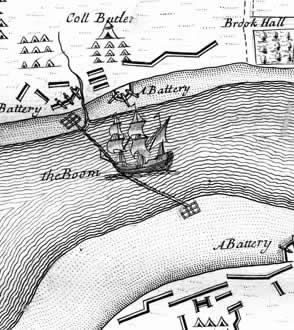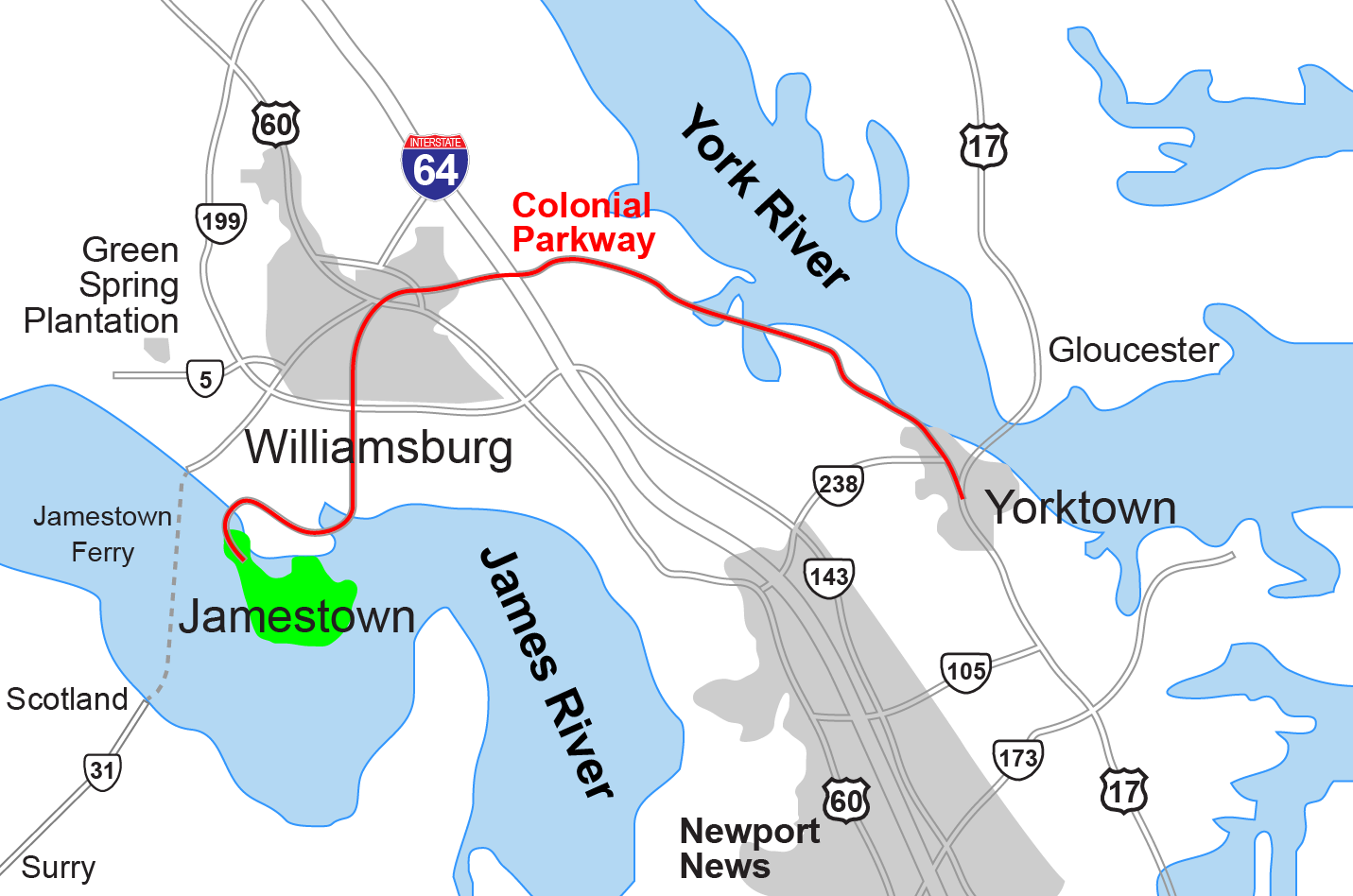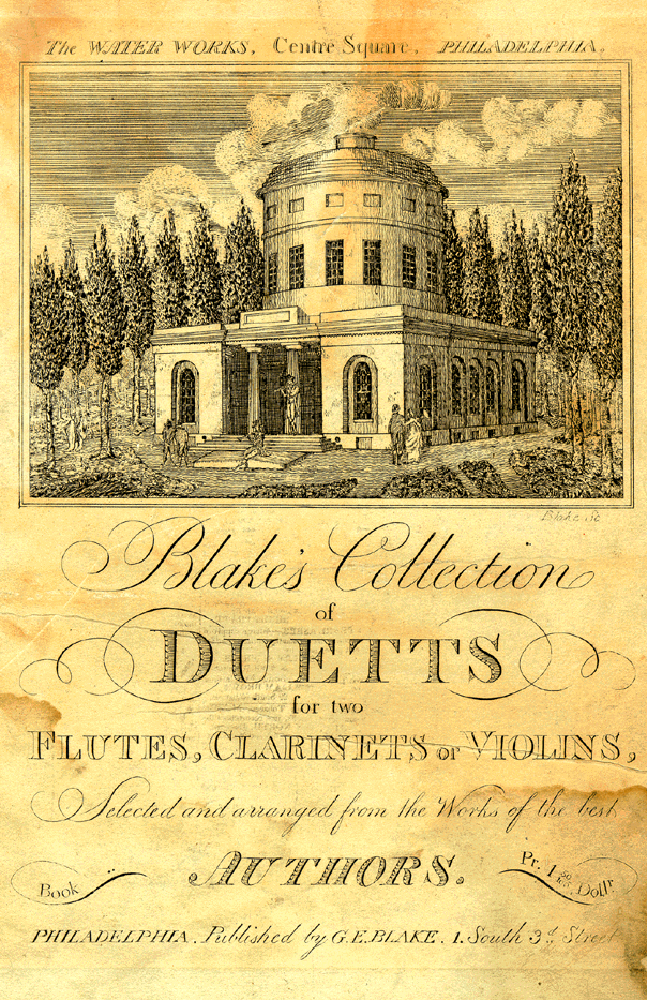|
Fort Nelson (Virginia)
Fort Nelson was a fort located on Hospital Point in Portsmouth, Virginia, which is currently the site of the Portsmouth Naval Hospital. The fort was named for Thomas Nelson Jr., governor of Virginia in 1781. It and Fort Norfolk were built to guard the Elizabeth River, including the cities of Norfolk and Portsmouth and the Gosport Navy Yard. The fort was originally built by patriot forces with funding from the Virginia government in 1776 during the American Revolutionary War, but destroyed when the British occupied the area in 1779. A British map shows that they rebuilt the fort by 1781. Following the Revolution, the fort was again rebuilt in 1794 under the first system of US fortifications, was garrisoned in the War of 1812, but was demolished in 1827 to make room for the naval hospital. The fort was again rebuilt by Confederate forces in 1861, but the Confederates evacuated the area in May 1862 and the fort was eventually demolished. American Revolution Late in 1776, Virgini ... [...More Info...] [...Related Items...] OR: [Wikipedia] [Google] [Baidu] |
Portsmouth, Virginia
Portsmouth is an independent city in southeast Virginia and across the Elizabeth River from Norfolk. As of the 2020 census, the population was 97,915. It is part of the Hampton Roads metropolitan area. The Norfolk Naval Shipyard and Naval Medical Center Portsmouth are historic and active U.S. Navy facilities located in Portsmouth. History In 1620, the future site of Portsmouth was recognized as a suitable shipbuilding location by John Wood, a shipbuilder, who petitioned King James I of England for a land grant. The surrounding area was soon settled as a plantation community.City of Portsmouth, Virginia - History [...More Info...] [...Related Items...] OR: [Wikipedia] [Google] [Baidu] |
Seacoast Defense In The United States
Seacoast defense was a major concern for the United States from its independence until World War II. Before Military aviation, airplanes, many of America's enemies could only reach it from the sea, making coastal forts an economical alternative to Standing army, standing armies or a large navy. After the 1940s, it was recognized that fixed fortifications were obsolete and ineffective against aircraft and missiles. However, in prior eras foreign fleets were a realistic threat, and substantial fortifications were built at key locations, especially protecting major harbors. The defenses heavily depended on fortifications but also included Submarine mines in United States harbor defense, submarine minefields, nets and boom (navigational barrier), booms, ships, and airplanes. Therefore, all of the armed forces participated in seacoast defense, but the United States Army Corps of Engineers, U.S. Army Corps of Engineers played the central role in constructing fixed defenses. Designs evo ... [...More Info...] [...Related Items...] OR: [Wikipedia] [Google] [Baidu] |
Battle Of Craney Island
The Battle of Craney Island was a victory for the United States during the War of 1812. The battle saved the city of Norfolk, and the adjacent city of Portsmouth, from British invasion. Especially important to Virginia and northeastern North Carolina, the region was a major hub for American commerce. Background Admiral Sir George Cockburn commanded a British fleet blockading Chesapeake Bay. In early 1813, Cockburn and Admiral Sir John B. Warren planned to attack the Gosport Shipyard in Portsmouth and capture the frigate U.S.S. ''Constellation''. Brigadier General Robert B. Taylor commanded the Virginia Militia in the Norfolk area. Taylor hastily built defenses around Norfolk and Portsmouth, but he had no intentions of letting the British penetrate as far as those two cities. Instead Taylor commandeered several ships and created a chain barrier across the Elizabeth River between Fort Norfolk and Fort Nelson. He next built the Craney Island Fort on the island of the same ... [...More Info...] [...Related Items...] OR: [Wikipedia] [Google] [Baidu] |
Boom (navigational Barrier)
A boom or a chain (also boom defence, harbour chain, river chain, chain boom, boom chain or variants) is an obstacle strung across a navigable stretch of water to control or block navigation. In modern times they usually have civil uses, such as to prevent access to a dangerous river channel. But, especially historically, they have been used militarily, with the goal of denying access to an enemy's ships: a modern example is the anti-submarine net. Booms have also been used to force passing vessels to pay a toll. Description A boom generally floats on the surface, while a chain can be on the surface or below the water. A chain could be made to float with rafts, logs, ships or other wood, making the chain a boom as well. Historical uses Especially in medieval times, the end of a chain could be attached to a chain tower or boom tower. This allowed safe raising or lowering of the chain, as they were often heavily fortified. By raising or lowering a chain or boom, access could be s ... [...More Info...] [...Related Items...] OR: [Wikipedia] [Google] [Baidu] |
Hampton Roads
Hampton Roads is the name of both a body of water in the United States that serves as a wide channel for the James River, James, Nansemond River, Nansemond and Elizabeth River (Virginia), Elizabeth rivers between Old Point Comfort and Sewell's Point where the Chesapeake Bay flows into the Atlantic Ocean, and the surrounding metropolitan region located in the southeastern Virginia and northeastern North Carolina portions of the Tidewater (region), Tidewater Region. Comprising the Virginia Beach–Norfolk–Newport News, VA–NC, metropolitan area and an extended combined statistical area that includes the Elizabeth City, North Carolina micropolitan area, Elizabeth City, North Carolina, micropolitan statistical area and Dare County, North Carolina, Kill Devil Hills, North Carolina, micropolitan statistical area, Hampton Roads is known for its large military presence, ice-free harbor, shipyards, coal piers, and miles of waterfront property and beaches, all of which contribute to th ... [...More Info...] [...Related Items...] OR: [Wikipedia] [Google] [Baidu] |
Chesapeake–Leopard Affair
The ''Chesapeake''–''Leopard'' affair was a naval engagement off the coast of Norfolk, Virginia, on June 22, 1807, between the British fourth-rate and the American frigate . The crew of ''Leopard'' pursued, attacked, and boarded the American frigate, looking for deserters from the Royal Navy. ''Chesapeake'' was caught unprepared and after a short battle involving broadsides received from ''Leopard'', the commander of ''Chesapeake'', James Barron, surrendered his vessel to the British. ''Chesapeake'' had fired only one shot. Four crew members were removed from the American vessel and were tried for desertion, one of whom was subsequently hanged. ''Chesapeake'' was allowed to return home, where James Barron was court martialed and relieved of command. The ''Chesapeake''–''Leopard'' affair created an uproar among Americans. There were strident calls for war with Great Britain, but these quickly subsided. President Thomas Jefferson initially attempted to use this widespread ... [...More Info...] [...Related Items...] OR: [Wikipedia] [Google] [Baidu] |
Decius Wadsworth
Decius Wadsworth (January 2, 1768 – November 8, 1821) was a Colonel in the U.S. Army before and during the War of 1812. He graduated from Yale College in 1785 with Honors. He was a renowned military organizer, engineer and inventor. In 1812, he was selected to be the 1st Chief of Ordnance for the new United States Army Ordnance Department. Family Decius Wadsworth was born in 1768 in Farmington, Connecticut, the eldest son of William Wadsworth, III and Mercy Clarke. He was a scion of the prominent Wadsworth family of Connecticut. He was a sixth generation descendant of William Wadsworth, an original founder of Hartford, Connecticut. He was a contemporary and relative of Jeremiah Wadsworth, James Wadsworth, William Wadsworth, and James Wadsworth. Colonel Jeremiah Wadsworth, his second cousin, left Decius a handsome sum in his will in 1804. Decius never married. Military career In 1794, Decius Wadsworth was appointed by President George Washington as a captain in the Artille ... [...More Info...] [...Related Items...] OR: [Wikipedia] [Google] [Baidu] |
Benjamin Henry Latrobe
Benjamin Henry Boneval Latrobe (May 1, 1764 – September 3, 1820) was an Anglo-American neoclassical architect who emigrated to the United States. He was one of the first formally trained, professional architects in the new United States, drawing on influences from his travels in Italy, as well as British and French Neoclassical architects such as Claude Nicolas Ledoux. In his thirties, he emigrated to the new United States and designed the United States Capitol, on " Capitol Hill" in Washington, D.C., as well as the Old Baltimore Cathedral or The Baltimore Basilica, (later renamed the Basilica of the National Shrine of the Assumption of the Blessed Virgin Mary). It is the first Cathedral constructed in the United States for any Christian denomination. Latrobe also designed the largest structure in America at the time, the "Merchants' Exchange" in Baltimore. With extensive balconied atriums through the wings and a large central rotunda under a low dome which dominated the city ... [...More Info...] [...Related Items...] OR: [Wikipedia] [Google] [Baidu] |
Crossfire
A crossfire (also known as interlocking fire) is a military term for the siting of weapons (often automatic weapons such as assault rifles or sub-machine guns) so that their arcs of fire overlap. This tactic came to prominence in World War I. Siting weapons this way is an example of the application of the defensive principle of ''mutual support''. The advantage of siting weapons that mutually support one another is that it is difficult for an attacker to find a covered approach to any one defensive position. Use of armour, air support, indirect fire support, and stealth are tactics that may be used to assault a defensive position. However, when combined with land mines, snipers, barbed wire, and air cover, crossfire became a difficult tactic to counter in the early 20th century. Trench warfare The tactic of using overlapping arcs of fire came to prominence during World War I where it was a feature of trench warfare. Machine guns were placed in groups, called machine-gun nests ... [...More Info...] [...Related Items...] OR: [Wikipedia] [Google] [Baidu] |
Bastion Fort
A bastion fort or ''trace italienne'' (a phrase derived from non-standard French, literally meaning ''Italian outline'') is a fortification in a style that evolved during the early modern period of gunpowder when the cannon came to dominate the battlefield. It was first seen in the mid-fifteenth century in Italy. Some types, especially when combined with ravelins and other outworks, resembled the related star fort of the same era. The design of the fort is normally a polygon with bastions at the corners of the walls. These outcroppings eliminated protected blind spots, called "dead zones", and allowed fire along the curtain from positions protected from direct fire. Many bastion forts also feature cavaliers, which are raised secondary structures based entirely inside the primary structure. Origins Their predecessors, medieval fortresses, were usually placed on high hills. From there, arrows were shot at the enemies. The enemies' hope was to either ram the gate or c ... [...More Info...] [...Related Items...] OR: [Wikipedia] [Google] [Baidu] |
Lord Cornwallis
Charles Cornwallis, 1st Marquess Cornwallis, (31 December 1738 – 5 October 1805), styled Viscount Brome between 1753 and 1762 and known as the Earl Cornwallis between 1762 and 1792, was a British Army general and official. In the United States and the United Kingdom, he is best remembered as one of the leading British generals in the American War of Independence. His surrender in 1781 to a combined American and French force at the siege of Yorktown ended significant hostilities in North America. He later served as a civil and military governor in Ireland, where he helped bring about the Act of Union; and in India, where he helped enact the Cornwallis Code and the Permanent Settlement. Born into an aristocratic family and educated at Eton and Cambridge, Cornwallis joined the army in 1757, seeing action in the Seven Years' War. Upon his father's death in 1762 he became Earl Cornwallis and entered the House of Lords. From 1766 until 1805 he was Colonel of the 33rd Regiment ... [...More Info...] [...Related Items...] OR: [Wikipedia] [Google] [Baidu] |
Parapet
A parapet is a barrier that is an extension of the wall at the edge of a roof, terrace, balcony, walkway or other structure. The word comes ultimately from the Italian ''parapetto'' (''parare'' 'to cover/defend' and ''petto'' 'chest/breast'). Where extending above a roof, a parapet may simply be the portion of an exterior wall that continues above the edge line of the roof surface, or may be a continuation of a vertical feature beneath the roof such as a fire wall or party wall. Parapets were originally used to defend buildings from military attack, but today they are primarily used as guard rails, to conceal rooftop equipment, reduce wind loads on the roof, and to prevent the spread of fires. In the Bible the Hebrews are obligated to build a parapet on the roof of their houses to prevent people falling (Deuteronomy 22:8). Parapet types Parapets may be plain, embattled, perforated or panelled, which are not mutually exclusive terms. *Plain parapets are upward extensions of ... [...More Info...] [...Related Items...] OR: [Wikipedia] [Google] [Baidu] |
_(2).jpg)








